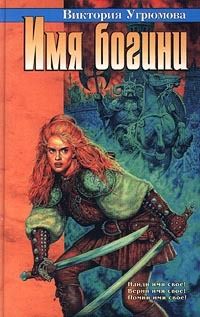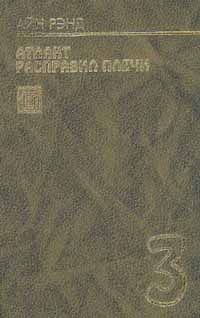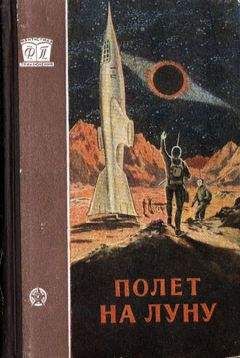Ознакомительная версия.
Reed, H.B. (1918). Associative aids: I. Their relation to learning, retention, and other associations. Psychological Review, 25, 128–155.
Reisberg, D., Culver, L.C., Heuer, F., & Fischman, D. (1986). Visual memory: When imagery vividness makes a difference. Journal of Mental Imagery, 10(4), 51–74.
Reisberg, D., & Leak, S. (1987). Visual imagery and memory for appearance: Does Clark Gable or George C. Scott have bushier eyebrows? Canadian Journal of Psychology, 41, 521–526.
Richardson, A. (1969). Mental imagery. London: Routledge & Kegan Paul.
Richardson, A. (1977a). The meaning and measurement of memory imagery. British Journal of Psychology, 68, 29–43.
Richardson, A. (1977b). Verbalizer-visualizer: A cognitive style dimension. Journal of Mental Imagery, 1, 109–125.
Richardson, A. (1978). Subject, task, and tester variables associated with initial eye movement responses. Journal of Mental Imagery, 2, 85–99.
Richardson, A. (1994). Individual differences in imaging: Their measurement, origins, and consequences. Amityville, NY: Baywood Publishing.
Richardson, J.T.E. (1975a). Concreteness and imageability. Quarterly Journal of Experimental Psychology, 27, 235–249.
Richardson, J.T.E. (1975b). Imagery and deep structure in the recall of English nominaliza-tions. British Journal of Psychology, 66, 333–339.
Richardson, J.T.E. (1978a). Mental imagery and memory: Coding ability or coding preference? Journal of Mental Imagery, 2, 101–115.
Richardson, J.T.E. (1978b). Reported mediators and individual differences in mental imagery. Memory and Cognition, 6, 376–378.
Richardson, J.T.E. (1979a). Correlations between imagery and memory across stimuli and across subjects. Bulletin of the Psychonomic Society, 14, 368–370.
Richardson, J.T.E. (1979b). Mental imagery, human memory, and the effects of closed head injury. British Journal of Social and Clinical Psychology, 18, 319–327.
Richardson, J.T.E. (1979c). Subjects’ reports in mental comparisons. Bulletin of the Psychonomic Society, 14, 371–372.
Richardson, J.T.E. (1980a). Concreteness, imagery, and semantic categorization. Journal of Mental Imagery, 4, 51–58.
Richardson, J.T.E. (1980b). Mental imagery and human memory. London: Macmillan. Richardson, J.T.E. (1980c). Mental imagery and stimulus concreteness. Journal of Mental Imagery, 4, 87–97.
Richardson, J.T.E. (1984). The effects of closed head injury upon intrusions and confusions in free recall. Cortex, 20, 413–420.
Richardson, J.T.E. (1985). Integration versus decomposition in the retention of complex ideas. Memory and Cognition, 13, 112–127.
Richardson, J.T.E. (1987). Social class limitations on the efficacy of imagery mnemonic instructions. British Journal of Psychology, 78, 65–77.
Richardson, J.T.E. (1989). Performance in free recall following rupture and repair of intracranial aneurysm. Brain and Cognition, 9, 210–226.
Richardson, J.T.E. (1990). Clinical and neuropsychological aspects of closed head injury. London: Taylor & Francis.
Richardson, J.T.E. (1991). Gender differences in imagery, cognition, and memory. In R.H. Logie & M. Denis (Eds), Mental images in human cognition (pp. 271–303). Amsterdam: Elsevier.
Richardson, J.T.E. (1995a). The efficacy of imagery mnemonics in memory remediation. Neuropsychologia, 33, 1345–1357.
Richardson, J.T.E. (1995b). Gender differences in the Vividness of Visual Imagery Questionnaire: A meta-analysis. Journal of Mental Imagery, 19(3 & 4), 177–187.
Richardson, J.T.E., & Barry, С (1985). The effects of minor closed head injury upon human memory: Further evidence on the role of mental imagery. Cognitive Neuropsychology, 2, 149–168.
Richardson, J.T.E., Cermak, L.S., Blackford, S.P., & O’Connor, M. (1987). The efficacy of imagery mnemonics following brain damage. In M.A. McDaniel & M. Pressley (Eds), Imagined and related mnemonic processes: Theories, individual differences and applications (pp. 303–328). New York: Springer-Verlag.
Richardson, J.T.E., & Rossan, S. (1994). Age limitations on the efficacy of imagery mnemonic instructions. Journal of Mental Imagery, 18, 151–164.
Richardson, J.T.E., & Snape, W. (1984). The effects of closed head injury upon human memory: An experimental analysis. Cognitive Neuropsychology, 1, 213–231.
Robertson, I.H., Halligan, P.W., & Marshall, J.C. (1993). Prospects for the rehabilitation of unilateral neglect. In I.H. Robertson & J.C. Marshall (Eds), Unilateral neglect: Clinical and experimental studies (pp. 279–292). Hove, UK: Lawrence Erlbaum Associates Ltd.
Rohwer, W.D., Jr. (1966). Constraint, syntax and meaning in paired-associate learning. Journal of Verbal Learning and Verbal Behavior, 5, 541–547.
Rohwer, W.D., Jr. (1973). Elaboration and learning in childhood and adolescence. In H.W. Reese (Ed.), Advances in child development and behavior (Vol. 8, pp. 1-57). New York: Academic Press.
Roland, P.E., & Friberg, L. (1985). Localization of cortical areas activated by thinking. Journal of Neurophysiology, 53, 1219–1243.
Rollins, M. (1989). Mental imagery: On the limits of cognitive science. New Haven, CT: Yale University Press.
Rosenthal, R. (1966). Experimenter effects in behavioral research. New York: Appleton-Century-Crofts.
Runquist, W.N., & Farley, F.H. (1964). The use of mediators in the learning of verbal paired associates. Journal of Verbal Learning and Verbal Behavior, 3, 280–285.
Segal, S.J. (1971). Processing of the stimulus in imagery and perception. In S.J. Segal (Ed.), Imagery: Current cognitive approaches (pp. 69-100). New York: Academic Press. Sergent, J. (1990). The neuropsychology of visual image generation: Data, method, and theory. Brain and Cognition, 13, 98—129.
Sheehan, P.W. (1966). Functional similarity of imaging to perceiving: Individual differences in vividness of imagery. Perceptual and Motor Skills, 23, 1011–1033.
Sheehan, P.W. (1967a). A shortened form of the Betts’ Questionnaire Upon Mental Imagery. Journal of Clinical Psychology, 23386-389.
Sheehan, P.W. (1967b). Visual imagery and the organizational properties of perceived stimuli. British Journal of Psychology, 58, 247–252.
Sheehan, P.W. (1972). A functional analysis of the role of visual imagery in unexpected recall. In P.W. Sheehan (Ed.), The function and nature of imagery (pp. 149–174). New York: Academic Press.
Sheehan, P.W., & Neisser, U. (1969). Some variables affecting the vividness of imagery in recall. British Journal of Psychology, 60, 71–80.
Sheikh, A.A. (1977). Mental images: Ghosts of sensations? Journal of Mental Imagery, 1, 1–4.
Shepard, R.N. (1966). Learning and recall as organisation and search. Journal of Verbal Learning and Verbal Behavior, 5, 201–204.
Shepard, R.N., & Feng, С (1972). A chronometric study of mental paper folding. Cognitive Psychology, 3, 228–243.
Shepard, R.N., & Metzler, J. (1971). Mental rotation of three-dimensional objects. Science, 171, 701–703.
Shepard, R.N., & Podgorny, P. (1978). Cognitive processes that resemble perceptual processes. In W.K. Estes (Ed.), Handbook of learning and cognitive processes: Vol. 5. Human information processing (pp. 189–237). Hillsdale, NJ: Erlbaum.
Shore, D.L. (1979). The effectiveness of verbal and visual imagery mnemonics in the remediation of organically based memory deficits. Dissertation Abstracts International, 40, 1916B.
Sitaram, N., Weingartner, H., Caine, E.D., & Gillin, J.C. (1978). Choline: Selective enhancement of serial learning and encoding of low imagery words in man. Life Sciences, 22, 1555–1560.
Sitaram, N., Weingartner, H., & Gillin, J.C. (1979). Choline chloride and arecoline: Effects on memory and sleep in man. In A. Barbeau, J.H. Growdon, & R.J. Wurtman (Eds), Nutrition and the brain: Vol. 5. Choline and lecithin in brain disorders (pp. 367–375). New York: Raven Press.
Sorabji, R. (1972). Aristotle on memory. London: Duckworth.
Start, K.B., & Richardson, A. (1964). Imagery and mental practice. British Journal of Educational Psychology, 34, 280–284.
Strack, F., & Schwarz, N. (1992). Communicative influences in standardized question situations: The case of implicit collaboration. In G.R. Semin & K. Fiedler (Eds), Language, interaction and social cognition (pp. 173–193). London: Sage.
Sunderland, A. (1990). The bisected image? Visual memory in patients with visual neglect. In P.J. Hampson, D.F. Marks, & J.T.E. Richardson (Eds), Imagery: Current developments (pp. 333–350). London: Routledge.
Tippett, L.J. (1992). The generation of visual images: A review of neuropsychological research and theory. Psychological Bulletin, 112, 415–432.
Toglia, M.P., & Battig, W.F. (1978). Handbook of semantic word norms. Hillsdale, NJ: Erlbaum.
Ungerleider, L.G., & Mishkin, M. (1982). Two cortical visual systems. In D.J. Ingle, M.A. Goodale, & R.J.W. Mansfield (Eds), Analysis of visual behavior (pp. 549–586). Cambridge, MA: MIT Press.
Vallar, G. (1993). The anatomical basis of spatial hemineglect in humans. In I.H. Robertson & J.C. Marshall (Eds), Unilateral neglect: Clinical and experimental studies (pp. 27–59). Hove, UK: Lawrence Erlbaum Associates Ltd.
Vogel, C.C., Markowitsch, H.J., Hempel, U., & Hackenberg, P. (1987). Verbal memory in brain damaged patients under different conditions of retrieval aids: A study of frontal, temporal, and diencephalic damaged subjects. International Journal ofNeuroscience, 33, 237–256.
Voyer, D., Voyer, S., & Bryden, M.P. (1995). Magnitude of sex differences in spatial abilities: A metaanalysis and consideration of critical variables. Psychological Bulletin, 17, 250–270.
Warren, M.W. (1977). The effects of recall-concurrent visual-motor distraction on picture and word recall. Memory and Cognition, 5, 362–370.
Watson, J.B. (1914). Behavior: An introduction to comparative psychology. New York: Holt.
Weatherly, D.C., Ball, S.E., & Stacks, J.R. (1997). Reliance on visual imagery and its relation to mental rotation. Perceptual and Motor Skills, 85, 431–434.
Weingartner, H., Caine, E.D., & Ebert, M.H. (1979a). Encoding processes, learning, and recall in Huntington’s disease. In T.N. Chase, N.S. Wexler, & A. Barbeau (Eds), Advances in neurology: Vol. 23. Huntington’s disease (pp. 215–226). New York: Raven Press.
Weingartner, H., Caine, E.D., & Ebert, M. H. (1979b). Imagery, encoding, and retrieval of information from memory: Some specific encoding-retrieval changes in Huntington’s disease. Journal of Abnormal Psychology, 88, 52–58.
White, K.D., Ashton, R., & Law, H. (1978). The measurement of imagery vividness: Effects of format and order on the Betts’ Questionnaire Upon Mental Imagery. Canadian Journal of Behavioural Science, 10, 68–78.
Williams, J.D., Rippon, G., Stone, B.M., & Annett, J. (1995). Psychophysiological correlates of dynamic imagery. British Journal of Psychology, 86, 283–300.
Wittgenstein, L. (1958). The blue and brown books. Oxford: Blackwell.
Wolkowitz, O.M., Tinklenberg, J.R., & Weingartner, H. (1985a). A psychopharmacological perspective of cognitive functions: I. Theoretical overview and methodological considerations. Neuropsychobiology, 14, 88–96.
Wolkowitz, O.M., Tinklenberg, J.R., & Weingartner, H. (1985b). A psychopharmacological perspective of cognitive functions: II. Specific pharmacologic agents. Neuropsychobiology, 14, 133–156.
Yates, F.A. (1966). The art of memory. London: Routledge & Kegan Paul.
Young, A.W. (1987). Cerebral hemisphere differences and reading. In J.R. Beech & A.M. Colley (Eds), Cognitive approaches to reading (pp. 139–168). Chichester, UK: Wiley.
Yuille, J.C. (1973). A detailed examination of mediation in PA learning. Memory and Cognition, 1, 333–342.
Zaidel, D., & Sperry, R.W. (1974). Memory impairment after commissurotomy in man. Brain, 97, 263–272.
Мысленные образы понимаются исследователями по-разному, но в русле каждого подхода были получены важные результаты, касающиеся роли образов в когнитивной сфере человека.
Термин «imagery» имеет определенные трудности перевода на русский язык. Речь идет о репрезентации некоего объекта на уровне образов памяти или воображения. В этой связи можно говорить о классах «внутренних образов» предметов, явлений, ситуаций, переживаемых в отсутствии их прообраза. Этот класс образных явлений основатели ленинградской психологической школы Б.Г. Ананьев и Б.Ф. Ломов назвали «вторичныими образами». (Прим. научн. ред.).
Questionnaire upon Mental Imagery.
Vividness of Visual Imagery Questionnaire.
Vividness of Movement Imagery Questionnaire
Test of Visual Imagery Control.
Individual Difference Questionnaire
Verbaliser-Visualiser Questioonaire.
Ознакомительная версия.





